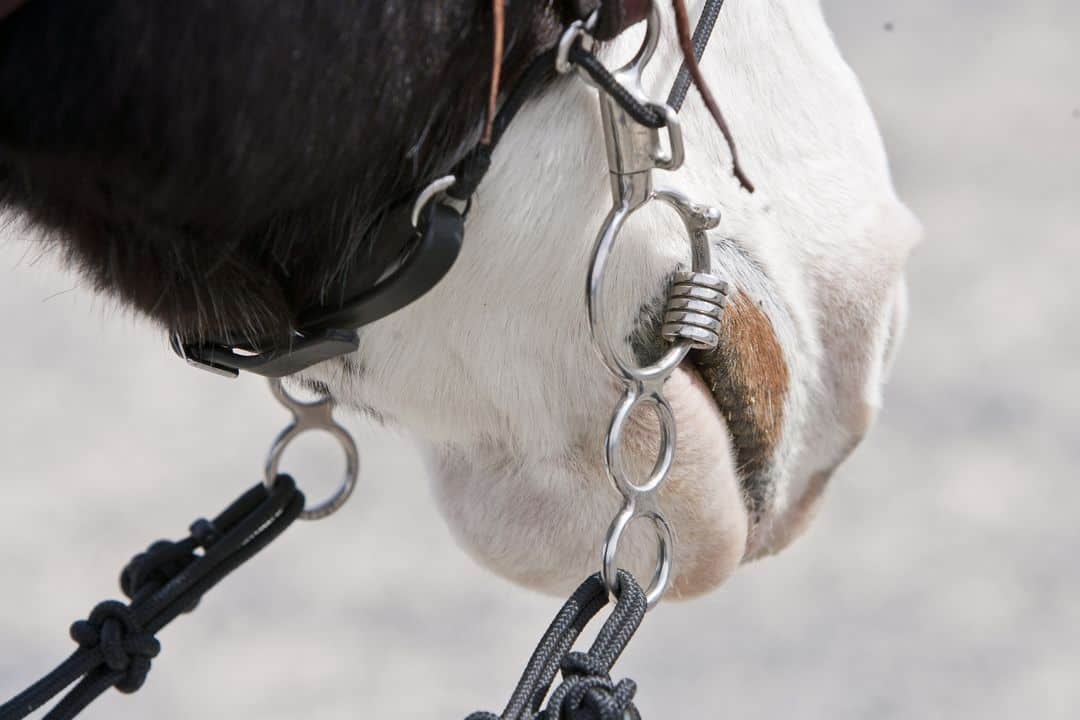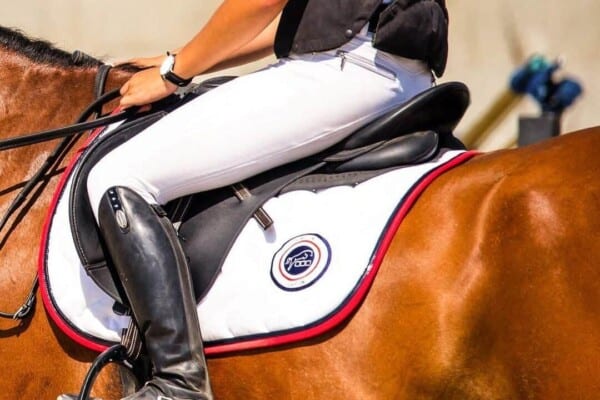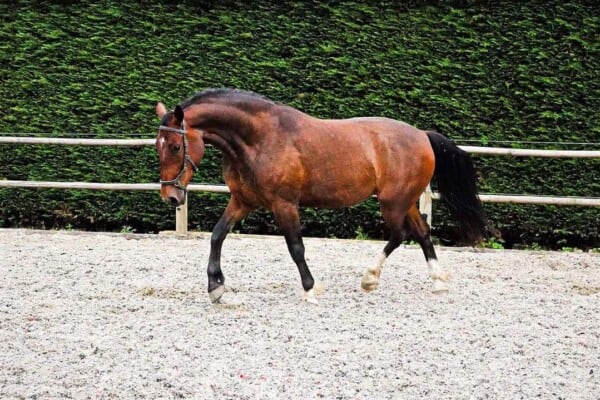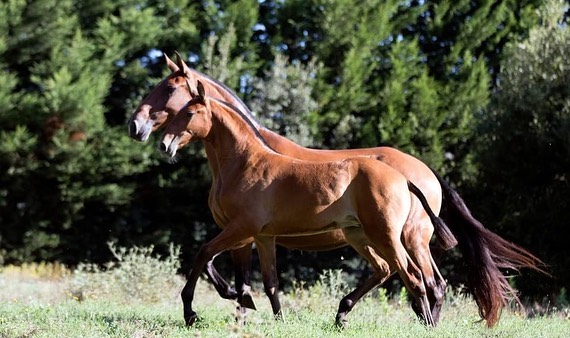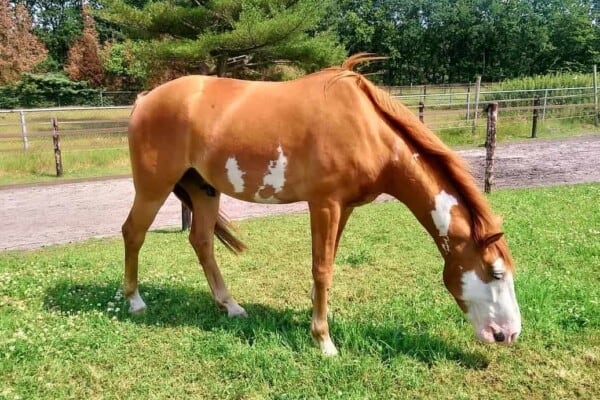Looking at horse bits is overwhelming. There are hundreds of different types. In recent years, many new designs have hit the market. However, choosing the right bit for your horse does not have to be complicated. Most horses will only need a common type. Let’s take a look at some common types of horse bits.
You can break bits down into two main types: pressure and leverage. Within these two types, there are several variations. Pressure bits are generally snaffles. Snaffles come with one joint, two joints, and a single bar mouthpiece, and various side rings. Leverage bits have side shanks and sometimes chains, a leather curb, or some other type of material strap.
Bits within the two main types also come in various materials, such as stainless steel, sweet iron, copper, plastic, and rubber. Mouthpieces come in different thicknesses. Each horse will have an individual preference for thickness and mouthpiece material.
Each variation has a slightly different effect or fit for the horse’s mouth.
English Horse bits
- Eggbutt snaffle
Eggbutt snaffles have a curved cheekpiece and usually have a single joint, also, unfortunately, called a nutcracker joint. However, you will find eggbutt horse bits with a variety of mouthpieces. The single joint is the most commonly used version. It is considered a mild bit, and the cheekpiece doesn’t pinch the sides of the horse’s mouth.
- D-Ring
The D-ring bit is named after the shape of its cheek pieces. D-ring bits come with many different mouthpieces, ranging from mild to severe. D-ring bits are commonly seen on racehorses and American hunters.
The straight side of the bit sits against the horse’s mouth and, like the eggbutt, doesn’t pinch. This bar helps with steering and turning. When the rein on one side of the mouth is used, the bar on the opposite side pushes against the horse. The ring comes in different sizes. The longer the straight side, the stronger the guiding effect.
The most commonly used mouthpieces used in D-ring bits are copper rollers and stainless steel, both with a single joint. Copper rollers encourage salivation, which can soften the mouth. They also help prevent a strong horse from grabbing onto the bit and pulling.
- Full cheek
The most commonly used full cheek snaffle is a single, nutcracker action type made from stainless steel. Full cheek bits have a circle cheekpiece where the reins attach with a long bar coming out of the top and bottom. The tops of the bars have rounded ends.
The bit fits the bridle in two ways; without keepers or with them. The bit is fairly stable in the mouth, but adding the keepers increases the stability. The keepers focus the bit’s pressure on the horse’s tongue and bars.
The sidebars help with steering by creating lateral pressure. It is a good bit for young horses that are learning rein aids. However, if the young horse is particularly sensitive, it is a good idea to use bit guards the first time to lessen the pressure on the sides of the mouth.
Extra care is needed when using this bit due to the long bars on the side. These bars, especially when not using keepers, can easily get caught on something and frighten even injure your horse. Avoid letting your horse scratch his face on his leg with the bit in, as it can get caught in his tendon boots.
- Loose ring
Loose ring bits are a simple design with circle cheekpieces. These are not fixed and move around. This means that the bit itself moves more in the horse’s mouth. Some horses prefer this feeling to a more stable bit. Because the bit moves, it is harder for the horse to lean against, promoting relaxation of the mouth.
It is a popular bit for young horses. Because the rings move, it gives the horse some warning of the rein aid, whereas a more fixed bit has more sudden action. The downside to the bit is that it can pinch the sides of the horse’s mouth. It is a good idea to use bit guards to prevent this.
- Pelham
The pelham is one of the most commonly used leverage bits. It is a strong horse bit, but horses tend to like it. The shanks on the side of the bit come in different lengths. A baby pelham horse bit has a shorter shank and is milder than those with a long shank. A chain connects the sides of the bit by going under the horse’s chin.
Pelham’s should be used with two reins. One on the main cheek piece and the second on the ring attached to the bottom of the shank. This allows for different pressures to be applied. By using only the top rein, the bit acts like a normal snaffle. Pressure on the curb or bottom rein applies leverage. This puts pressure on the horse’s poll and activates the chain, which puts pressure on the chin.
You should never use this bit with just the bottom rein, as you continuously put pressure on the poll and chin. Ideally, learn to use two reins correctly. But if you haven’t mastered two reins, then use bit roundings. Roundings are leather straps that connect to the main cheekpiece and the curb ring. You then attach one rein to the rounding.
- Dutch gag
Two types of bits are known as gags. The Dutch gag has three or four round rings on either side. The rings are fixed and don’t move, except for the main one that attaches to the bit. It is a strong bit and provides leverage. The reins are attached to the main ring and one of the smaller bottom rings. The lower the ring used, the more leverage and harshness of the bit. The leverage applies pressure to the horse’s poll.
Always use a Dutch gag with two reins or roundings. It is often misused by placing only one rein on a lower ring.
The bit comes with various mouthpieces, but a standard single joint is the most common.
- Linked bits
Three types of linked bits are commonly used: French link, Dr. Bristol, and lozenge. These are all double-jointed mouthpieces and don’t have a nutcracker effect. It is a common opinion that these types of bits are milder than single jointed.
The French link has a rectangular plate with rounded edges that apply pressure to the horse’s tongue. It distributes pressure more evenly across the mouth than a single joint.
The Dr. Bristol bit is very similar to and can easily get mixed up with the French link. The difference is that the center plate is longer than a French link’s and sits at a slight angle. This results in stronger pressure on the tongue.
The lozenge or ball joint is simply a ball that joins both sides of the bit. This ball exerts pressure on the tongue. It is less severe than a Dr. Bristol but more severe than a French link as there is less space to distribute pressure.
Western Horse bits
Like English Horse bits, there is a huge choice of western Horse bits. You will notice that shank bits are more commonly used in western riding than English.
Grazing bit
The grazing bit is the western version of the English single jointed snaffle. In other words, one of the most commonly used. It gets its name from the angle of the shanks, which are angled back toward the horse. This allowed the horse to graze while wearing the bit, making it suitable for days out working cattle. However, there is a risk the horse could step on the bit.
The bit comes with a port mouthpiece, which varies in size. The port provides room for the horse’s tongue; relieving pressure. The bit is for finished horses that neck rein and respond to light aids. The shanks provide a lot of leverage and can be severe in the wrong hands.
Tom thumb
The Tom thumb bit has a single jointed mouthpiece and shorter shanks than some other bits. However, because it is a nutcracker bit, it can be quite severe, combining leverage with pressure against the roof of the horse’s mouth. It is a commonly used bit but misguided choice due to looking less severe than it is.
Junior cow horse
The junior cow horse is a popular bit for rodeo events. It comes in both single and double-jointed and is made from sweet iron. The more common version has a center roller. The shanks are fairly short and provide a mild gag action – that is lifting the head. It also applies poll and lip pressure.
Correction bit
The name of this bit can mislead an a beginner or an inexperienced rider. It isn’t a bit to fix issues but a bit for an already trained horse to reinforce rein aids. If not used correctly it can be extremely severe and create more problems. It is a bit to be used temporarily by experienced hands to fine-tune a horse. It applies pressure to the horse’s bars and tongue.
Quarter moon D-ring snaffle
The quarter moon is very similar to common English bits. It is a double-jointed bit. The center piece has one raised, curved side on top with a nearly flat bottom. It is similar in action to the English French link. It is commonly used on young horses in training.
S-Shank curb it
The S-Shank is a common western bit used by experienced riders on a finished horse. It has shanks with a distinct S shape. This shape affects the bit’s balance and severity. Even though it’s shanks are no longer than a grazing bit, it is much more severe. The port mouth amplifies rein aids. Use this bit with caution.
If you are bit hunting and feel overwhelmed about what to choose don’t hesitate to get advice from a trainer. A lot of damage can be done with the wrong bit that is hard to repair and some bits appear milder than they appear. It is always best to start with a simple, mild bit and work from there.

